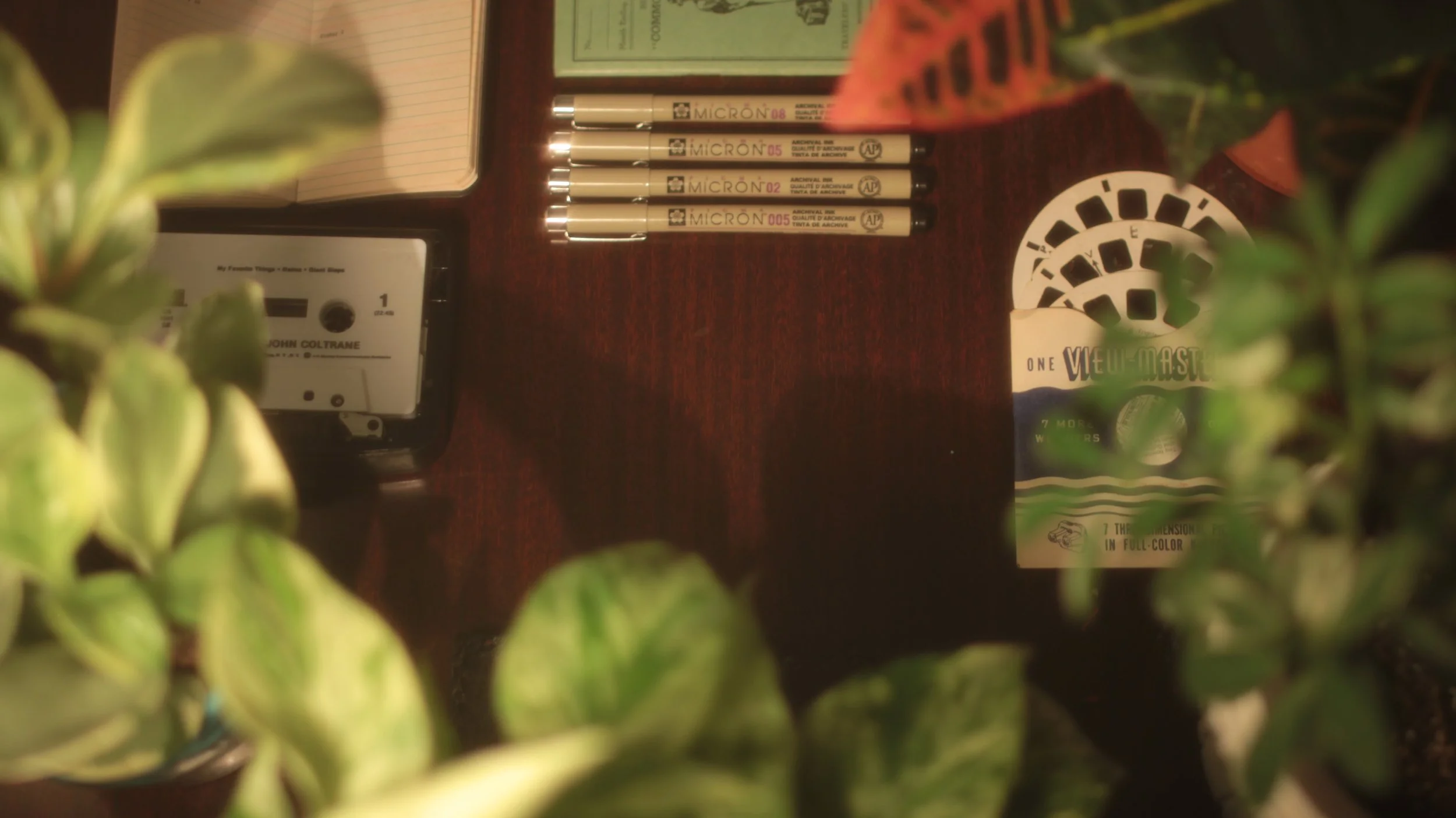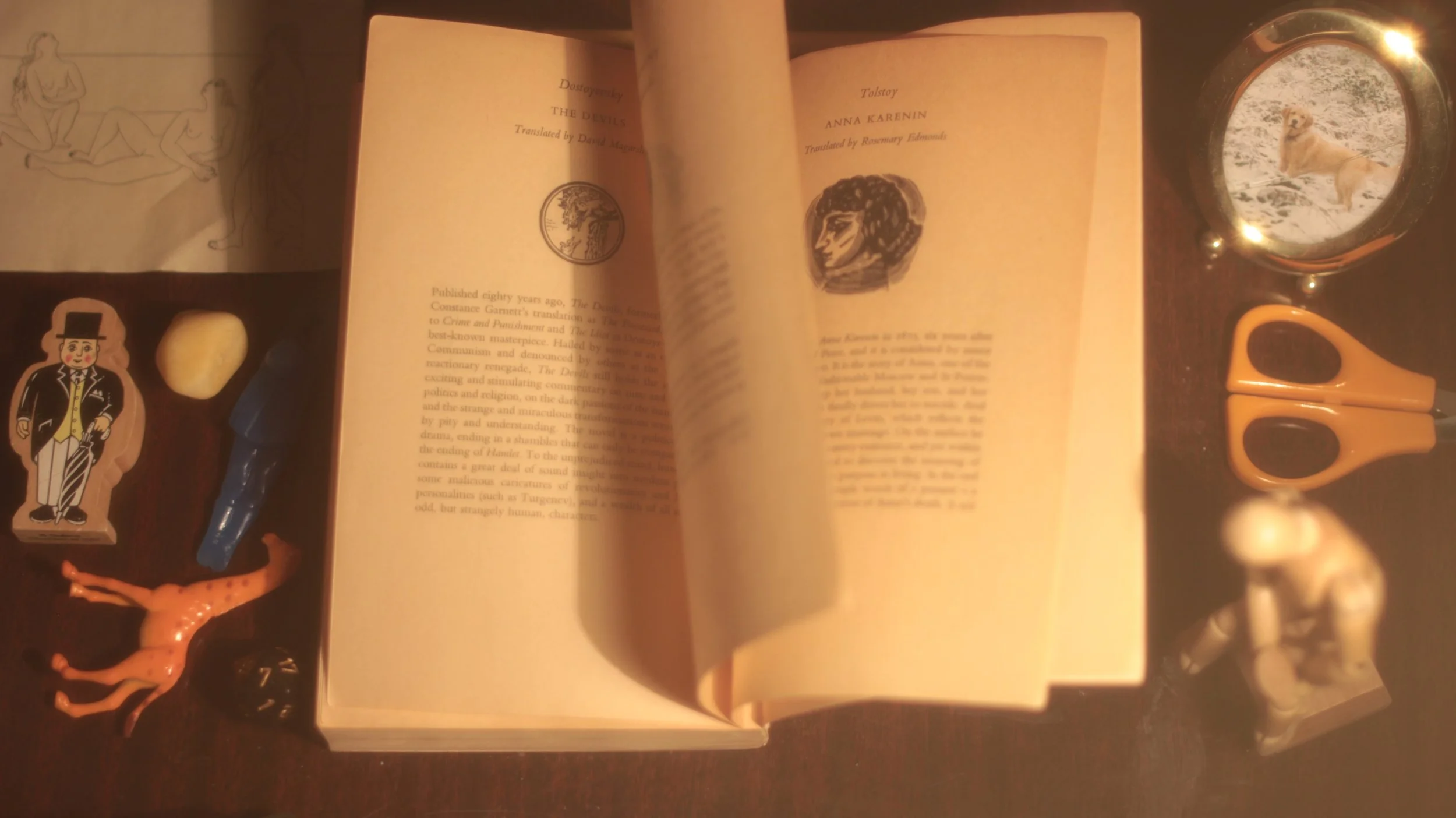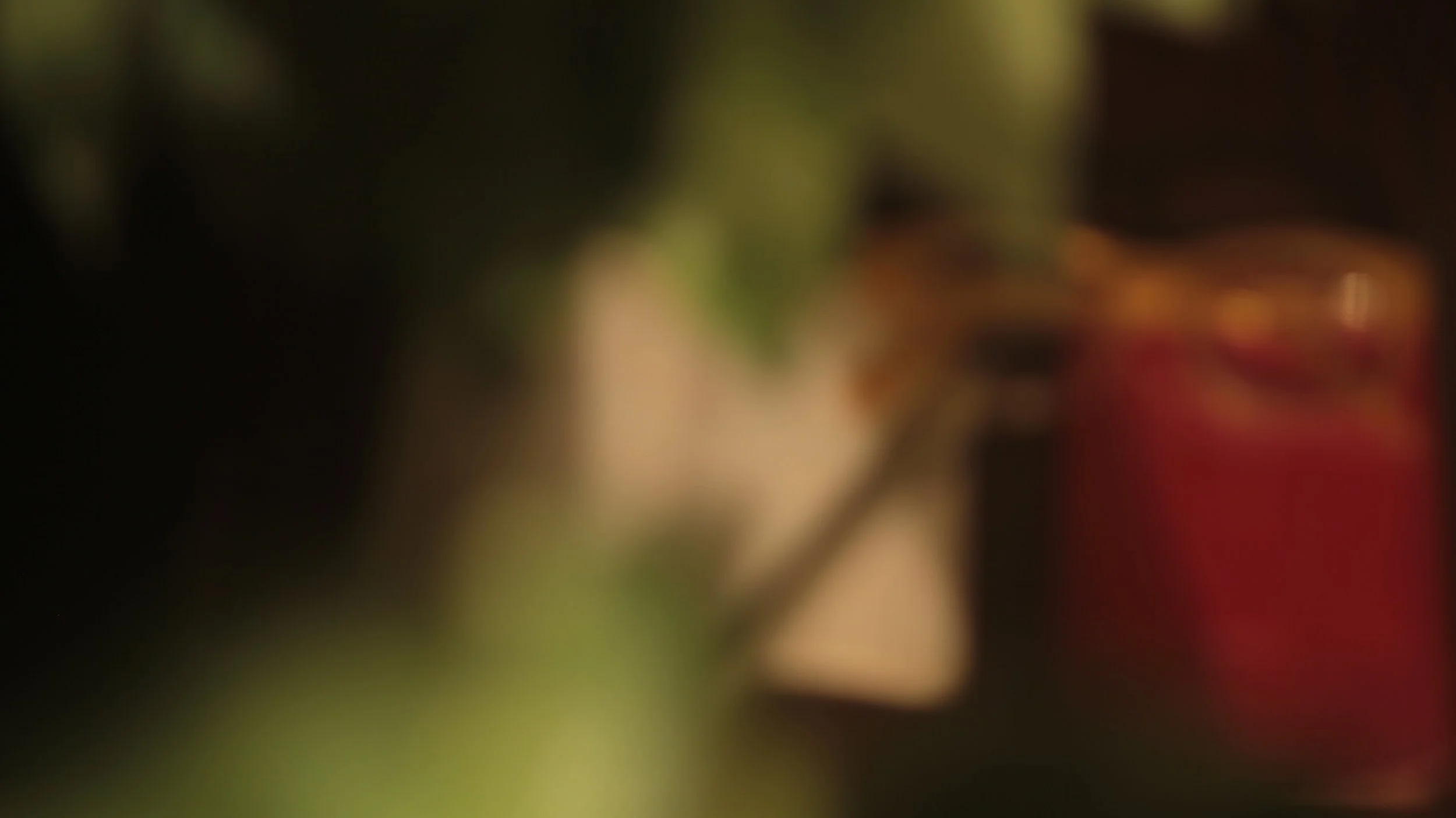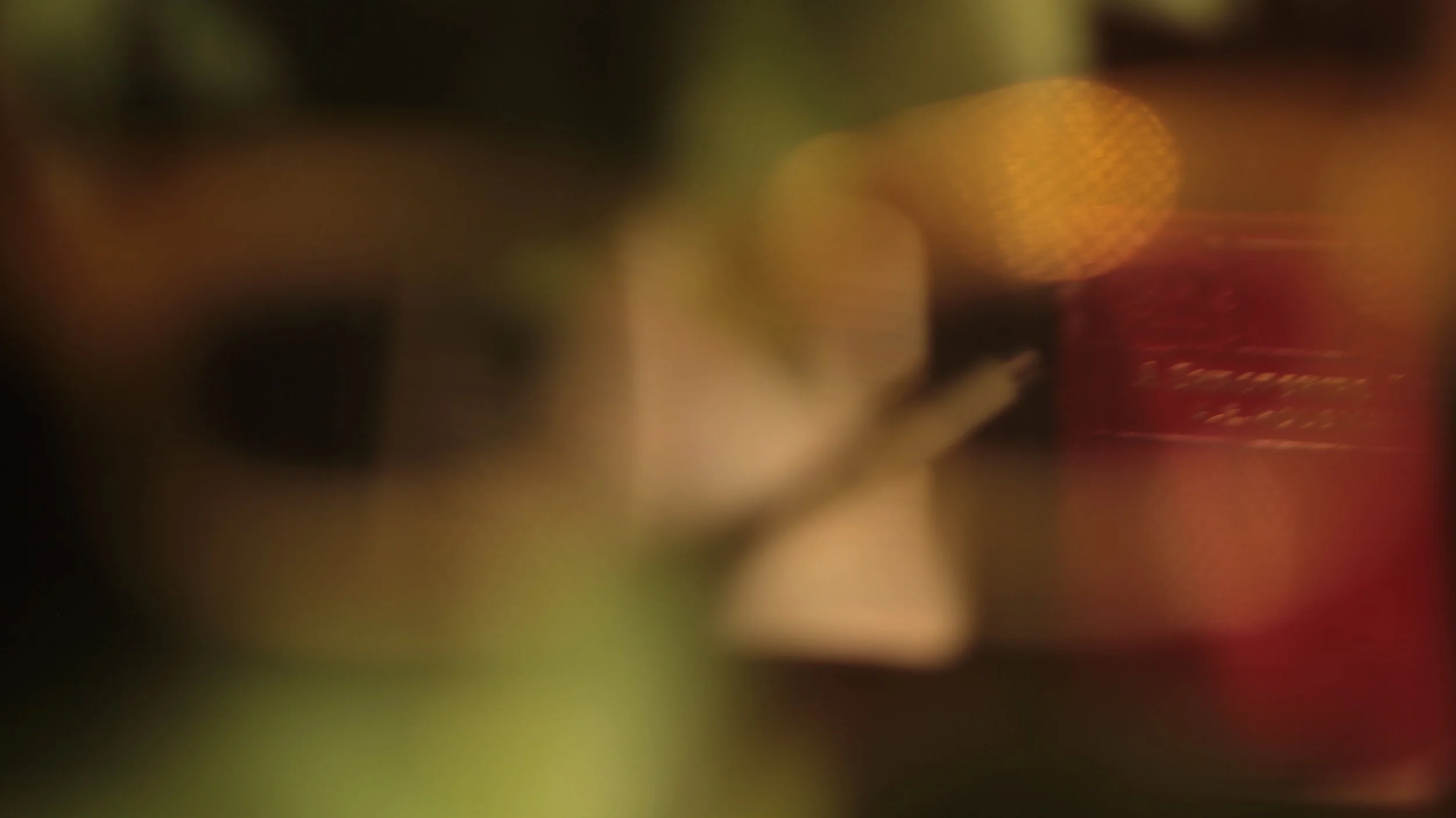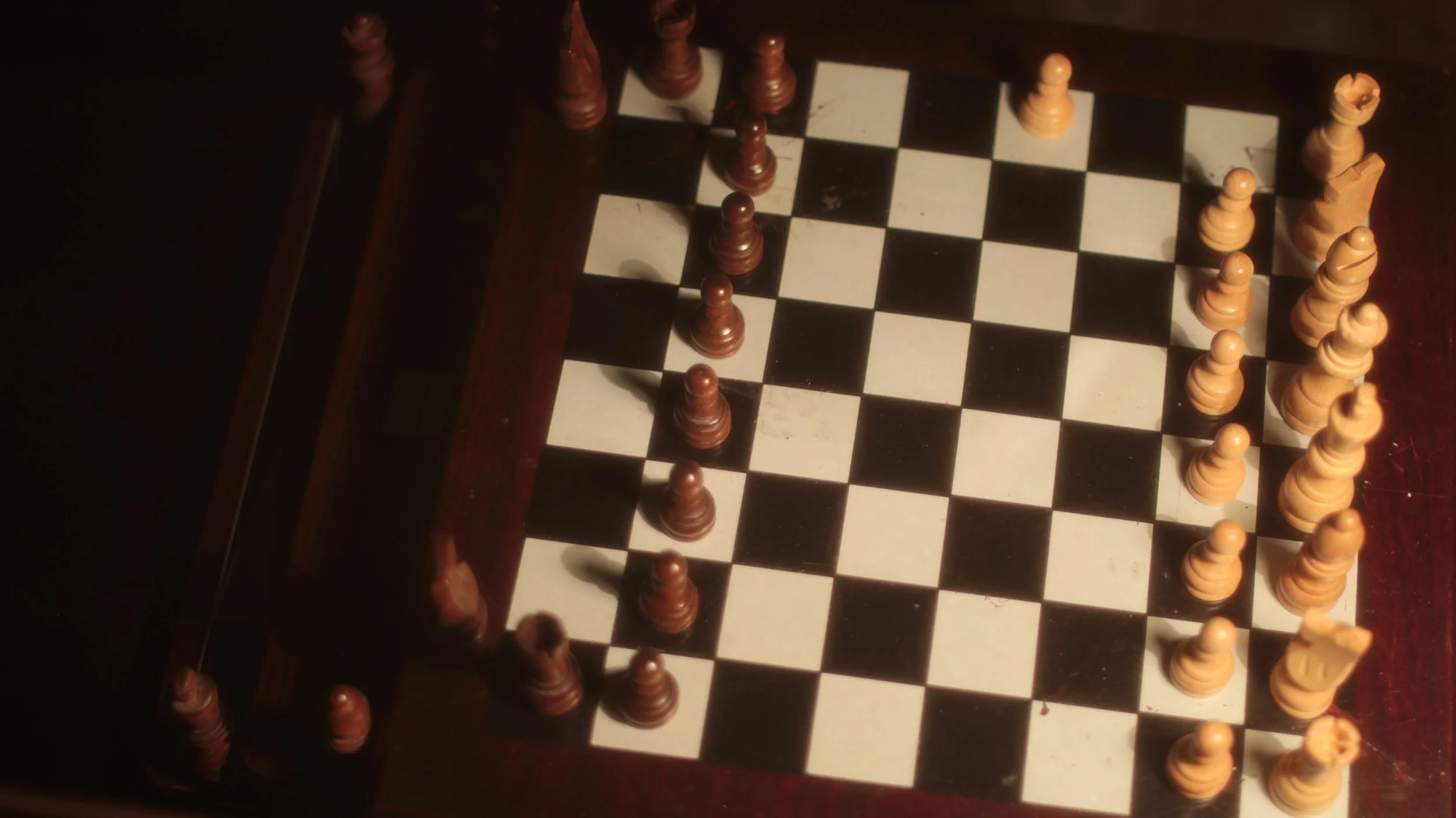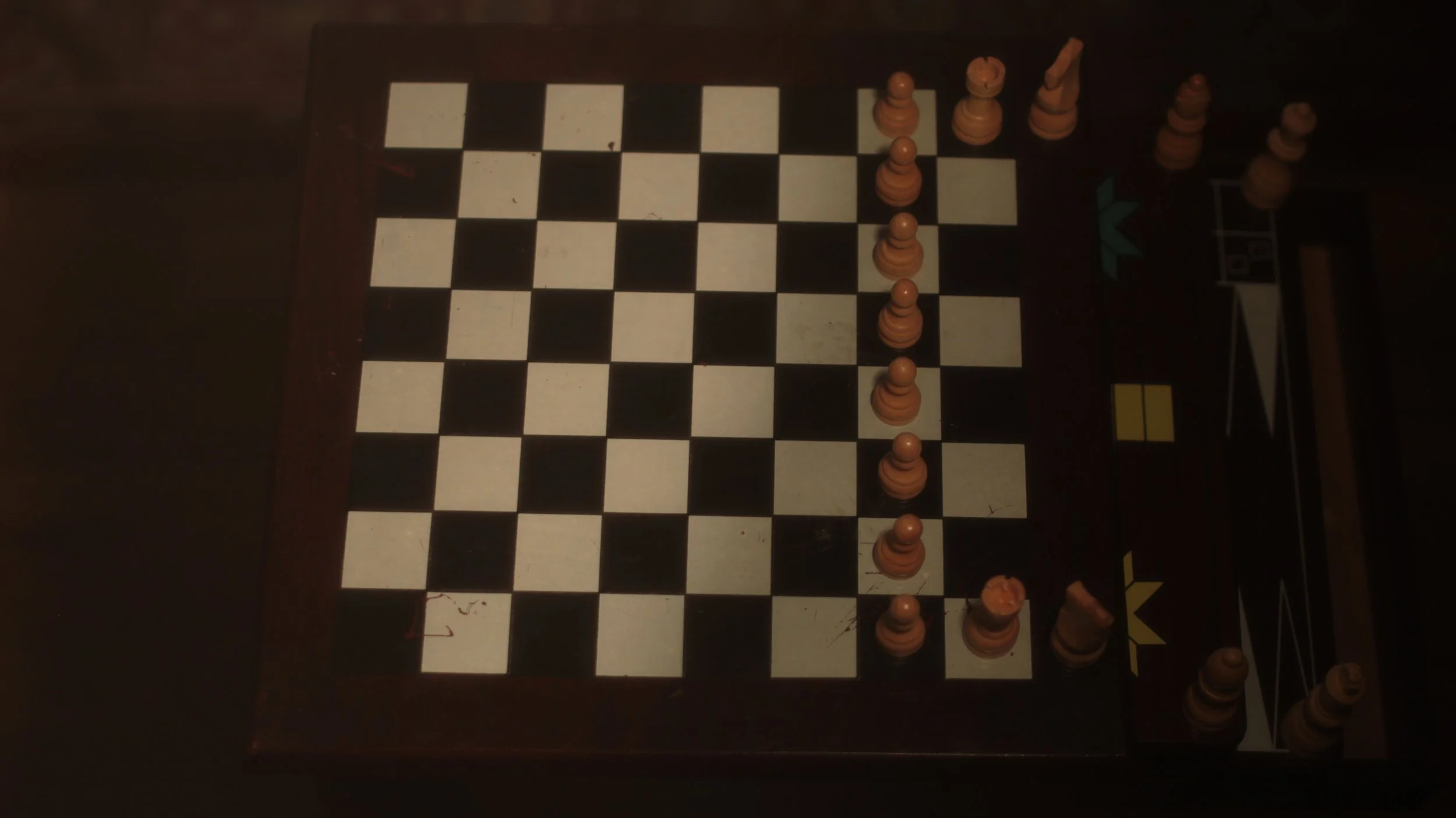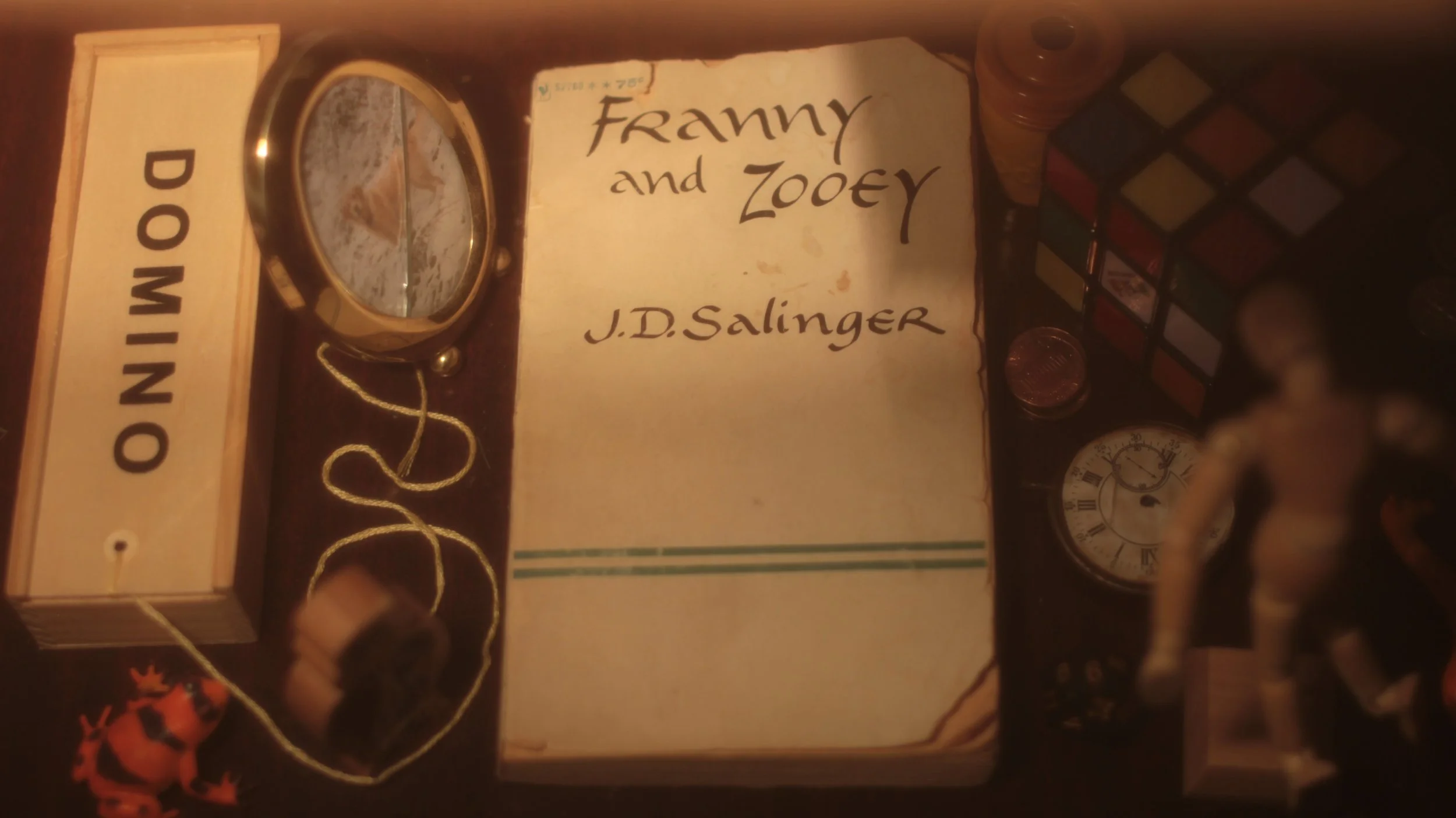Chess & Letters
Two writers get into a scrap
2018 – 2024
Fragment of an unfinished stop-motion sequence for an unfinished film titled Marcy’s Book, in which two writers exchange heated words and chess moves through the post.
Erin Harrington as MARCY
June Francis as SEYMOUR
Created by James Kolakowski
00:02:11 | 12 f/s | 1.85:1 | ColorTranscript
Marcy Chips
62 Oakchester Ave.
Plainview, Conn. (06825)
Dear Seymour Hatman, Do you have a favorite Velvet Underground song? I’m making a tape. I am writing to alert you that I’ve had a change of heart. I wish to perhaps consider participating in the contest maybe. As I said, this is all just up in the air right now and I’d like to know your thoughts.Marcy Chips(P.S. Would you like to play a game of chess? I think I’ve gotten better.)Seymour Hatman
32 Willoughby Dr.
Plainview, Conn. (06825)
Dear Marcy Chips, To answer your question, “After Hours” from the second self-title. In response to your proposition: AN EMPHATIC YES!—You absolutely must participate! There’s nothing I’d love more! Do you understand?—you’re gonna knock ‘em dead, Marcy! I am so excited! I’ve got to read your manuscript—when I come over for chess I’ll dive in! When should I come over, by the way?Seymour HatmanSeymour,
I’m flattered by your excitement, but I’ve only just made the decision and I haven’t even anything to type it with.
Marcy
(P.S. I also figured we’d just play chess through the mail. Pawn to H4. White.) I’m flattered by your excitement, but I’ve only just made the decision and I haven’t even anything to type it with.Marcy(P.S. I also figured we’d just play chess through the mail. Pawn to H4. White.)Marcy, I’m a little hurt because you told me at the tea picnic that you were still putting out work. As a matter of fact, when you called the school you said you were dead-set on a novel. People don’t write out novels in long-hand. But I’d better not get hung up on it to begin with. It’s no matter. Know why? Because I’d like to lend you my typewriter.Seymour(Pawn to D6.)Seymour, I’m sorry I lied to your face. It was wrong and I shouldn’t have done it. And anyway, no—I cannot use your typewriter. I’m sorry, but I can’t.Marcy(Knight to C3.)[Conversation ends unfinished]Appendix
The unfinished sequence was shot in 2019 between mid-February and late March. Though the filmmaker’s meticulous plans for the sequence were lost, he remembers key details:
The sequence was meant to be played at twelve frames per second.
An entire six- or seven-move game of chess was carefully choreographed, and the victor of the game was also to be the victor of the quarrel.
Seymour would have the last word.*
First eighty-five frames (approx. seven seconds) after several nights’ work
(Sun. 17 Feb. 2019, 17:08)
The original vision for the sequence was meant to take the eccentric efficiency of a Wes Anderson stop-motion sequence, lace it with Salingerian dialogue** recited at His Girl Friday speed, and give it the set decoration of an I Spy book come to life.
Setup for Seymour’s first letter, after the the paper has magically ascended with the help of an unseen stack of cassette cases; now supported by the leaves of several houseplants.
(Wed. 20 Feb. 2019, 22:32)
Approximately one and a half to two hours of careful positioning and photographing were invested into each night working on the sequence. These were usually the nights before class during the filmmaker’s senior year of high school, and would wrap anywhere from nine p.m. to midnight. This served the dual purpose of preventing daylight from interfering with lighting continuity, and as a means of putting of scholarly obligations.
Frame #922. A gauzy veil was placed over the camera lens to give the sequence an ethereal softness, a technique borrowed from Picnic at Hanging Rock, a movie I hated at the time.
(Wed. 06 Mar. 2019, 23:06)
The film is concerned with a character whose aspirations as a writer are regularly sabotaged by the brutality of perfectionism. She is tormented by the thought of this perfect idea in her head being sullied by reality’s inevitable imperfections, and for this reason she is unable to finish her book.
The stop-motion sequence was left incomplete after weeks of planning, a month of shooting, and one thousand and thirty-two frames with roughly a thousand more to go. Halfway finished, with a whopping eighty-six seconds in the can, the sequence was axed from the top down after the entire film was abandoned due in large part to the filmmaker’s ongoing battle with perfectionism.***
* The attentive viewer’s eye will spy a die that lies on the corner of Seymour’s desk. The d20 is first seen displaying the number 8, and then 6, as Seymour reads Marcy’s letters at his desk. If taken to indicate that eight letters were planned to be exchanged betwixt the feuding wordsmiths, it would appear that Marcy’s designation as the even-numbered correspondent would foreshadow Seymour—odd—getting the last word.
** Only two of what were to be several explicit literary references were made, mainly in the form of books Seymour’d be reading.
The first is to Dostoevsky, whose titular idiot is not so idiotic as he is sincere, optimistic, and kind—traits that earn him a reputation of idiocy among his callous countrymen and -women. The same fate is experienced by Seymour, a booksmart dweeb who only seems to lack street smarts, and is too old to be giving apples to his schoolteachers.
The second is a reference to Salinger, whose knack for dialogue in Franny and Zooey had a great deal of influence on the film’s obviously inferior script. Seymour—who is named after the eldest son in the dynastic Glass family to whom Franny and Zooey are little sister and brother, respectively—seems to be starting that book after having finished The Idiot.
*** The movie was also supposed to be about how art imitates life or whatever.

